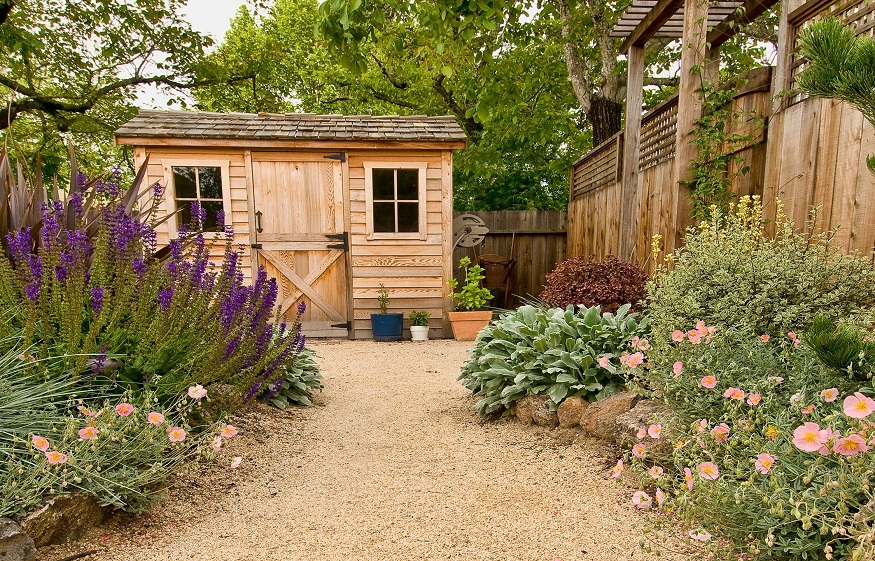Having a swimming pool at home has many advantages. You can enjoy the pleasures and benefits of swimming at any time. However, at the end of the summer season, you must already prepare for winter to protect your swimming pool. This involves various upkeep and maintenance operations of the basin, but also of the equipment. Usually uncovered, a poorly protected pool risks serious damage and becoming unusable. So how do you protect your swimming pool in winter?
Dismantle your pool and store it to protect it during the winter
When the good weather is over, it is essential to store your pool in order to protect it throughout the winter. This is the case if you have an inflatable, freestanding or tubular pool. To do this, you must start by emptying the pool . To do this, you just have to connect a hose to the plug that is at the bottom of the pool. If water does not flow automatically, prime the hose by sucking air through your mouth. Route the hose to the chosen drain location. Depending on the volume of the pond, this method can take many hours.
If you want to proceed faster, opt for the siphoning technique. To do this, you need several garden hoses. In order to increase the flow of water evacuation, opt for large-caliber pipes. To evacuate the water remaining at the bottom of the pool, use the previous method.
Another option is to drain the pool with a sump pump . This solution is the fastest. Finally, if your pool is equipped with a sand pump , put the valve in the drain position and start the pump. The water in the pool will then be evacuated outside.
Clean the pool well afterwards and let it dry well before storing it. Do the same with all the components of the structure.
Thoroughly clean your pool to protect it and prepare it for winter
A solid swimming pool which cannot be dismantled and which must therefore remain in the garden must be cleaned completely after the summer. This is crucial to properly protect your pool in winter. To do this, use cleaning accessories such as gloves, a landing net and a brush.
Then, brush the bottom of the pool using your pool cleaner. If you have an electric robot , run the long cycle for deep cleaning of the pool. Also clean all its components such as the filter as well as its equipment (stairs, etc.). They must also be stored in a dry place to protect them from freezing.
When this is done, it is recommended to carry out a water shock treatment. This procedure eliminates all viruses, fungi, algae and bacteria present in the pool. Use chlorine shock if you usually treat your pool with chlorine.
Actively or passively winterize your pool to protect it in winter
In order to better protect your swimming pool in winter , wintering is an essential step as soon as the water in your buried or above-ground pool drops to 12°C. For this, you have the choice between the active method and the passive method.
The active wintering of the pool
This first method consists of slowing down the operation of the filtration system and other equipment. In other words, it just slows the rate of water outflow instead of stopping filtration altogether. This technique has the advantage of preserving the quality of your bathing water. In addition, restarting your pool is easier and less time-consuming. As a result, you can enjoy your pool more quickly.
After cleaning the pool and shock-treating the water, pour winterizing product into the pool water to protect it during the winter. You have, for example, this pool wintering product REVA-HIVER 3 L container (Ref: 150 016).
Successful active overwintering is critically dependent on water filtration . You must filter it daily taking into account the temperature. The filtration time should correspond to the value of half the water temperature. Thus, if it reaches 10°C, the water must be filtered for 8 hours a day, part of which during the night in order to prevent the water from freezing. Indeed, in the evening, the temperatures begin to drop.
To make your job easier, you can install a frost protection box . This device protects the filtration system of your swimming pool during the winter. It triggers the filtration pump to start when the temperature drops to a pre-established level. The water is stirred in this way, which prevents it from freezing.
Passive wintering of the pool
Passive wintering is an alternative to protect your pool against cold and frost during the winter season. Unlike the active method, this technique involves the complete and permanent shutdown of the filtration system. In addition, you must lower the water level by emptying part of the basin.
You still have to be careful not to empty it entirely, because the consequences are dangerous.
Clean and insulate plumbing against cold and freezing
The first thing to do to properly protect your pool in winter is to clean and insulate the plumbing. Several reasons explain the importance of this operation. First of all, these cleaning works are considered as the anticipation phase of the protection of the basin and the equipment of your swimming pool. They consist in evacuating all the water which is in the pipes in anticipation of the arrival of cold and frost. It will freeze when temperatures drop below 0°C.
After making sure that the water has been completely driven out of the pipes, you must then plug them at the ends with wintering plugs. This helps prevent frost from penetrating inside and causing serious damage to the piping. Not only will you not be able to use your pool for the duration of the repair work, but the cost is also likely to be expensive. Therefore, it is recommended to take the lead and anticipate winter. At the same time, you optimize its lifespan.





